Battle of Coral Sea
Contributor: C. Peter Chen
ww2dbaseThe Japanese Operation MO offensive aimed to capture Tulagi in the Solomon Islands and Port Moresby in Australian Papua. The successful occupation of the two key positions would set up bases necessary for the control of the air space and waters in the lowers Solomon Islands chain as well as for the interception of Allied shipping in northern Australia. Security the lower Solomon Islands chain also provided security for a planned campaign against the Nauru and Ocean islands, which were rich in phosphate. Since most of Japan's available carriers were under preparation for Operation MI (Midway) and Operation AL (Aleutians), Operation MO was to be supported by a relatively modest fleet centered around two fleet carriers, Shokaku and Zuikaku, supported by one light carrier, Shoho; the fleet was placed under the command of Vice Admiral Shigeyoshi Inoue.
ww2dbaseOn the Allied side, intelligence gathered from Joseph Rochefort's cryptanalysis section indicated a large naval build-up at the Japanese base at Rabaul in New Britain. Radio intercepts yielded code names such as MO, RZP, RXB, etc., and Rochefort would hypothesize, with degrees of confidence, that these codes pointed to the region around Port Moresby. With intelligence gathered by Rochefort's team, Chester Nimitz deduced on 29 Apr 1942 that the Japanese were planning on an attack on or around 3 May. Nimitz assigned US Navy Task Force 11, centered around carrier USS Lexington and under the command of Rear Admiral Aubrey Fitch, and Task Force 17, centered around carrier USS Yorktown and under the commander of Rear Admiral Frank Fletcher, with the task of counterattacking the Japanese invasion fleet. US Army General Douglas MacArthur's Task Force 44 under the command of Australian Vice Admiral John Crace would also be sent forward; aside from US warships, Leary's force also included two Australian cruisers. While Rochefort's intelligence provided the Allies a great advantage, the information was not perfect; Rochefort's team had mistakenly concluded that the Japanese deployed up to five carriers for this operation, far outnumbering the US carrier force, thus the Americans moved into this battle with a conservative frame of mine. Another intelligence failing was that the Japanese carrier force was said to be in a support role for the ground invasion; in fact, Inoue received orders from Yamamoto to strike out at US carriers should their presence be detected.
ww2dbaseWhen the Japanese landed at Tulagi on 3 May 1942, Fitch and Fletcher's task forces were each hundreds of miles from the Solomon Islands for refueling, not realizing that the Japanese operation had already begun. Admiral Fletcher came to the realization and raced toward Tulagi without waiting for Admiral Fitch. Japanese warships broke off with the landing forces early in order to prepare for the landing operations at Port Moresby. The battle started with Fletcher launching 28 dive bombers and 12 torpedo bombers against the landing force in Tulagi, damaging a destroyer and sinking three minesweepers. This gave Inoue the clue that Yamamoto's suspicion regarding the presence of US carriers in the region was correct, and he ordered Shokaku and Zuikaku to steam south while preparing his aircraft for attacks against enemy ships; as it would turn out, however, they would arrive in the Tulagi region too late to attack the US carriers. While the Japanese land-based bombers from Rabaul attacked Port Moresby to soften up defenses for the subsequent amphibious invasion, carrier aircraft from both sides searched out for opposing carriers in failure, even as the two fleets were less than 80 miles from each other near the end of the day. US land-based B-17 Flying Fortress bombers did find the light carrier Shoho earlier on 6 May, but the subsequent bombing attack failed to cause any damage.
ww2dbaseIn the morning of 7 May, Japanese patrol planes detected oil tanker USS Neosho and mis-identified her as a carrier. Rear Admiral Tadaichi Hara, in tactical command of Zuikaku and Shokaku, launched aircraft to attack the "carrier", disabling USS Neosho and sinking destroyer USS Sims. On the return trip, bombs already expended, the Japanese aircraft stumbled upon the US fleet carriers, and it was the Americans' turn to make a mis-identification error, turning on landing lights for the Japanese aircraft; indeed some of the Japanese aviators, not expecting to run into US carriers, attempted to land on USS Yorktown. The confusion was very quickly cleared up as USS Yorktown's gunners spotted the rising sun emblems on the aircraft at the distance of about 250 yards and opened fire, shooting down the leading aircraft on landing pattern. It was not until then the Japanese realized that USS Neosho must not be the carrier they were looking for.
ww2dbaseAround 1200 hours on the same day, Fletcher's task force was attacked by Japanese aircraft after some of Fletcher's cruisers detached to attack the landing convoy at Port Moresby. Destroyer Farragut was attacked by Japanese bombers, but stayed afloat. During the engagement, Fletcher's aircraft reported the discovery of Japanese carriers northwest of the US fleet's location, but like the Japanese episode mentioned above, these American pilots made the same mistake of mis-identification; they were actually merchant ships. The Americans had expected the Japanese fleet to come from that direction (in fact, the Japanese were located to the north), thus this discovery quickly led to the false conclusion that they had found the main Japanese fleet. Although this mistake seemed to mirror that of the Japanese regarding USS Neosho, the Americans were far luckier, as the carrier aircraft sent to attack the merchant ships accidentally stumbled upon the light carrier Shoho that was sailing apart from Shokaku and Zuikaku. The attack spurred an intense aerial engagement that lasted into the night, and Shoho was sunk after suffering 7 torpedo hits and 13 bomb hits. While the loss of Shoho was devastating, the loss of aircraft were minimal since most of her aircraft were in the air and were able to land on other carriers or at nearby land bases.
ww2dbaseNot knowing that the two fleets were very close to each other, the admirals of both sides both backed off during the night.
ww2dbaseIn the morning of 8 May 1942, both the Americans and the Japanese launched about 120 aircraft against the others. The US aircraft found their targets first, hitting Shokaku with two bombs, starting a fire; the attack cost the Americans 43 aircraft. Shokaku's damage control crew put down the fire, and her captain turned her around for home. The Japanese attack also found the US fleet, scoring a hit on USS Yorktown with an 800-pound bomb and on USS Lexington with two. Lexington's fuel lines ruptured, leaking fuel fumes that eventually caused a chain of explosions. USS Lexington was scuttled as the fire burned beyond control.
ww2dbaseHaving learned that Inoue had turned back the carrier fleet, Yamamoto angrily sent a radio message to ask for Inoue's reasoning. Receiving no response, he sent an order for Inoue to turn around and go back on an offensive against the US carriers. When Inoue complied, it was all too late; by the time his ships returned to the site of the Battle of Coral Sea and launched their reconnaissance aircraft, the US warships had already departed.
ww2dbaseThe final score of the Battle of Coral Sea looked bad for the Americans, and Japan promptly declared it a victory. However, the victory was only tactical. Strategically, Japan lost the offensive momentum, and Operation MO was no placed on hold indefinitely; Chief of Staff of the Combined Fleet Matome Ugaki would place the blame of losing the momentum on Inoue. Moreover, the damage suffered by Shokaku necessitated her, and thus the whole Fifth Carrier Division which included Zuikaku, to be removed from the front lines for repairs, thus making this division unavailable for subsequent actions, namely Operation MI against Midway Atoll.
ww2dbaseSources:
Elliot Carlson, Joe Rochefort's War
Dan van der Vat, The Pacific Campaign
United States Strategic Bombing Survey Interrogations of Japanese Officials
Last Major Update: Mar 2012
Battle of Coral Sea Interactive Map
Photographs
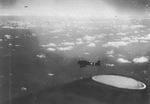 |  | 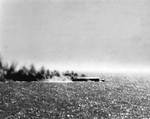 | 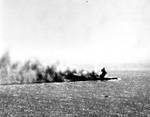 |
Maps
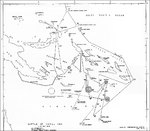 | 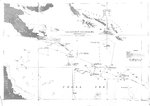 | 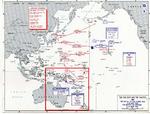 | 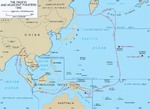 |
Battle of Coral Sea Timeline
| 21 Apr 1942 | Joseph Rochefort's cryptanalytic team based in Pearl Harbor, US Territory of Hawaii intercepted a Japanese Navy radio message noting that Carrier Division 5 (Shokaku and Zuikaku) were being detached from the Mobile Force for operations with the 4th Fleet in the South Pacific. |
| 22 Apr 1942 | Joseph Rochefort's cryptanalytic team based in Pearl Harbor, US Territory of Hawaii detected a concentration of Japanese warships at Rabaul, New Britain, including five carriers; while they correctly determined that Shokaku, Zuikaku, and Shoho being at Rabaul, they had mistakenly placed two others (including Kaga) at this location. |
| 24 Apr 1942 | Joseph Rochefort's cryptanalytic team based in Pearl Harbor, US Territory of Hawaii had intercepted Japanese Navy radio messages mentioning the existence of task forces bearing names such as MO Covering Force, MO Attack Force, RZP Occupation Force, RXB Occupation Force, etc. Rochefort would quickly arrive at the hypothesis that these task forces were organized for an attack in the Port Moresby, Australian Papua region. |
| 27 Apr 1942 | Joseph Rochefort's cryptanalytic team based in Pearl Harbor, US Territory of Hawaii reported that the Japanese Navy had changed call signs of some major warships, possibly indicating that a major operation was about to take place. |
| 29 Apr 1942 | Japanese Special Naval Landing Force departed Rabaul, New Britain aboard transports for the invasion of the RAAF seaplane base at Tulagi, Solomon Islands. On the same day, other transports at Rabaul embarked equipment necessary to build a new base at Port Moresby, Australian Papua. In Pearl Harbor, US Territory of Hawaii, Joseph Rochefort's cryptanalytic team intercepted a radio message from Isoroku Yamamoto to Shigeyoshi Inoue regarding Operation MO, in which Yamamoto made mention of northern Australia, thus giving Rochefort confidence regarding the hypothesis that Operation MO's target was Port Moresby. |
| 30 Apr 1942 | At Pearl Harbor, US Territory of Hawaii, Joseph Rochefort sent Chester Nimitz a report regarding Rochefort's hypothesis that the Japanese might soon be striking at Port Moresby, Australian Papua. Since radio intercepts made mention of multiple targets, he concluded that Tulagi in the Solomon Islands was also a likely target. |
| 1 May 1942 | Eleven Japanese transports departed Rabaul, New Britain for the invasion of Port Moresby, Australian Papua; they were escorted by seven cruisers and one light carrier; on the same day, Type 1 and Type 6 land attack aircraft of Genzan Air Group arrived at Rabaul for future use with the Port Moresby invasion. On the same day, three B-26 Marauder bombers of US 22nd Bomb Group struck Rabaul, causing minor damage to an airfield. Tulagi in the Solomon Islands, another target of the Japanese offensive operation, was bombed by Japanese aircraft, destroying one Australian PBY Catalina aircraft. Near the New Hebrides islands, US Navy Task Force 11 (containing carrier Lexington) and Task Force 17 (containing carrier Yorktown) made rendezvous. At Pearl Harbor, US Territory of Hawaii, Joseph Rochefort furnished a report for Chester Nimitz and Ernest King that noted Port Moresby as the likely Japanese target, northern Australia was not being targeted for now, and Japanese reconnaissance operations seemed to be targeting Hawaiian Islands and Aleutian Islands. |
| 2 May 1942 | The Japanese launched another aerial bombardment against the Australian seaplane base at Tulagi, Solomon Islands. Deducing that an invasion of coming soon, the Australian personnel evacuated the base after sundown. |
| 3 May 1942 | Japanese 3rd Kure Special Landing Force captured Tulagi Island and Gavutu Island in the Solomon Islands. |
| 4 May 1942 | Allied aircraft were launched from Queensland and Horn Island in Australia and from Port Moresby, Australian Papua to detect Japanese naval movements. At 1035 hours, a B-25 Mitchell bomber spotted carrier Shoho and her group. |
| 5 May 1942 | A B-25 Mitchell bomber spotted Shoho during the day. After dark, 3 B-17 Flying Fortress bombers were brought up from Australia to Port Moresby, Australian Papua and were loaded up with 600-pound bombs for an attack on Shoho. |
| 6 May 1942 | Starting at 0345 hours, B-17 Flying Fortress bombers took off from Port Moresby, Australian Papua to attack Japanese carrier Shoho which was spotted on the previous day; they attacked at about 0800 hours, causing no damage. Meanwhile, US carriers made rendezvous with Australian cruisers to set up an ambush at the Jomard Passage east of Australian Papua on New Guinea island. Later in the day, carrier aircraft from both sides searched for each other without success; at 2000 hours, the two fleets were merely 80 miles from each other, still not detecting the other party. Elsewhere, the new Japanese seaplane base at Tulagi, Solomon Islands was completed. |
| 7 May 1942 | At Coral Sea, Japanese carriers attacked US oiler Neosho and destroyer Sims thinking they were a carrier and cruiser, while US carriers attacked escort carrier Shoho and nearby cruisers and destroyer thinking it was part of the main carrier force. At 1747 hours, 12 Japanese dive bombers and 15 torpedo bombers in search of the US carrier fleet was intercepted by 11 US fighters; 9 Japanese and 3 US aircraft were destroyed during the subsequent engagement. At the end of the day, both sides decided against a night battle and prepared for new attacks at dawn. |
| 8 May 1942 | Japanese and US carrier fleets at Coral Sea discovered each other in the morning, each closing in to attack. Japanese carrier Shokaku was damaged by 3 bombs at 1057 hours (223 casualties), while American carrier USS Lexington was hit by two bombs at 1120 hours (191 killed; would soon be lost) and American carrier USS Yorktown was hit by a bomb (66 casualties). Meanwhile at Port Moresby, an Australian cruiser force successfully defended itself against land-based aircraft attack as it blocked the Japanese invasion fleet for Port Moresby, New Guinea. As both sides withdrew due to damage and losses, the Japanese scored a tactical victory, but lost strategic momentum as the Port Moresby invasion must now be delayed. |
| 8 May 1942 | In the Battle of the Coral Sea, USS Hammann fired on incoming Japanese aircraft and then rescued 500 survivors of the disabled carrier USS Lexington. |
| 8 May 1942 | Portland took aboard 929 survivors of the stricken carrier USS Lexington (Lexington-class) in the Battle of the Coral Sea |
| 11 May 1942 | Australian and American aircraft located the wreck of fleet oiler USS Neosho, damaged during the Battle of the Coral Sea and adrift for four days. Destroyer USS Henley arrived at 1300 hours to pick up the survivors and to scuttle Neosho with gunfire. |
| 3 Jul 1942 | Japanese leadership officially canceled the invasion of Port Moresby, New Guinea. |
Did you enjoy this article or find this article helpful? If so, please consider supporting us on Patreon. Even $1 per month will go a long way! Thank you. Share this article with your friends: Stay updated with WW2DB: |
Visitor Submitted Comments
25 Apr 2007 08:48:51 AM
The carrier the Japanese thought they had sunk at Coral Sea was the Yorktown. It was hastily repaired in 3 days at Pearl Harbour, in time to fight (and be sunk) at the Battle of midway
21 May 2007 10:27:52 PM
Yep, then the new Yorktown was an Essex-class fleet carrier. I believe there was an Essex-class Enterprise, too.
21 May 2007 10:32:38 PM
There was a lot of confusion during these battles. At one time, a group of Japanese dive bombers came in for landing on an American carrier, thinking it was their own. The Americans on board thought they were American planes so they put on their landing spotlights and stuff. It wasnt until the first plane got to a few hundred yards or so from the carrier that the Americans realized their mistake and opened fire. That plane was shot down and the others got away.
22 Oct 2007 10:22:39 AM
i am doing a report on the battle of coral sea and it is very hard to understand. i dont get it.
20 May 2008 01:16:38 PM
i did a report on this battle because i knew nothing about it and i learned so much from just doing this report and i thank my treacher making us do it.
3 Jul 2008 02:06:00 AM
Im doing an extended essay on aircraft chainging the tide of the wat and its *** confusing
14 May 2009 06:39:22 PM
why did the americans believe the coral sea battle was a victory
31 Mar 2010 06:49:41 AM
@friend in need of help: because it held off the invasion of Port Moresby. had the Japanese did Invade, they would've cut off Australia from the rest of it's allies.
13 May 2011 08:05:37 PM
I have a question that I can’t get an answer to. Australia in the Second World War used World One Rifles, the Lee Enfield bolt action. We were offered the US Grand semi auto rifle. Why didn’t we take up that option instead of using the out of date Lee Enfield. Was it was because we had to be seen as part of Britain a decision that cost many more Australian lives.
16 May 2011 11:57:49 PM
Friend in need of help. Americans lost many lives in the battle of the Coral Sea. Stopping Japans push south by them saved Australia. I was born in 1943 and if Japan had invaded I may have ended up as many babies did in the Philippines. The Japanese soldier would throw babies in the air catching them on their bayonets. How war brings out the worst in people. America is all that stood between us and the japans invasion force. So you see to Australia the battle of the Coral Sea was possible the most important off the Second World War. So you may now understand when I say “GOD BLESS AMERICA”. Next Anzac day take a Stars and Stripe flag with our Australian Nation Flag and thank the few that are left that march with our guys.
19 Mar 2013 08:20:48 PM
hi
I am appealing for any concerned individuals or organization who have listed missing US Air force pilots and have yet to confirm their place of rest, through their remains in a RING and Name TAG, i have evidence of two servicemen.
It is from the Battle of the Coral Sea, a US bomber wreck in Imom Village, Morobe, PNG.
Interested persons my call on (675) 72394877 or email; mondan.nime7@gmail.com
19 Mar 2013 08:40:55 PM
Mr. Ongi Teweng of Imom Village, Kabwum, Morobe Province, Papua New Guinea has in his possession a pure gold ring and a name tag that belongs to two different American soldiers who served as US air force pilot during WW2 in the northern part of Australia during 'The Battle of the Coral Sea'.
The RING has the script; US Air Force Army, Spence Fielo, Sea FTC Pilot. While the NAME TAG has; Ramond Civeros, 38204263, T43, Louis T Civeros, 1005 So Leonas St, San Antonio, Tex P.
We are prepared to establish contacts and assist in all possible ways. However we anticipate a reward as a gesture of goodwill and friendship as it requires greater effort and sacrifice in uncovering the artifacts from the jungle were an American fighter jet wreck is found.
The actual items and photographs of the wreck is in our possession at present.
Contact us on (675)72394877 or email; mondan.nime7@gmail.com
Looking forward for your response.
3 May 2021 11:29:21 PM
So in reality the US lost more ship tonnage and lives than the *** .
I would call that a loss.
4 May 2021 11:39:23 AM
Anonymous (above):
Yes, Coral Sea was considered a tactical loss for the Americans and for just the reasons you stated, but the fact the Japanese were engaged as they were in a way that caused them to stop (or at least fatally pause) their advance on Guadalcanal made Coral Sea a strategic victory. Plus, Coral Sea helped set the stage for the Battle of Midway to follow.
All visitor submitted comments are opinions of those making the submissions and do not reflect views of WW2DB.
» Crace, John
» Farncomb, Harold
» Fitch, Aubrey
» Fletcher, Frank
» Hara, Chuichi
» Inoue, Shigeyoshi
» Iwamoto, Tetsuzo
» Kiefer, Dixie
» Kodaira, Yoshinao
» Layton, Edwin
» Minami, Yoshimi
» Rochefort, Joseph
» Takagi, Takeo
» Vorse, Albert
» Yamaoka, Mineo
Location:
» Pacific Ocean
Ship Participants:
» Astoria (New Orleans-class)
» Australia
» Chester
» Chicago
» Haguro
» Hammann
» Hobart
» Kako
» Kinugasa
» Kongo
» Lexington (Lexington-class)
» Minneapolis
» Mutsuki
» Myoko
» New Orleans
» Portland
» Shoho
» Shokaku
» Sims
» Tenryu
» Yorktown (Yorktown-class)
» Yubari
» Yugure
» Zuikaku
Documents:
» Interrogation Nav 10, Captain Mineo Yamaoka
» Interrogation Nav 13, Captain Yasuji Watanabe
» Interrogation Nav 8, Commander Masatake Okumiya and Commander H. Sekino
Related Book:
» Joe Rochefort's War
- » 1,147 biographies
- » 337 events
- » 43,435 timeline entries
- » 1,237 ships
- » 349 aircraft models
- » 207 vehicle models
- » 372 weapon models
- » 123 historical documents
- » 259 facilities
- » 468 book reviews
- » 28,403 photos
- » 432 maps
George Patton, 31 May 1944
Please consider supporting us on Patreon. Even $1 a month will go a long way. Thank you!
Or, please support us by purchasing some WW2DB merchandise at TeeSpring, Thank you!
18 Apr 2007 09:19:34 PM
Im not sure about something. I know the Japanese thought they destroyed a US carrier that later turned up at Midway, but was it Yorktown, or Enterprise? Or even Hornet? I cant remember.